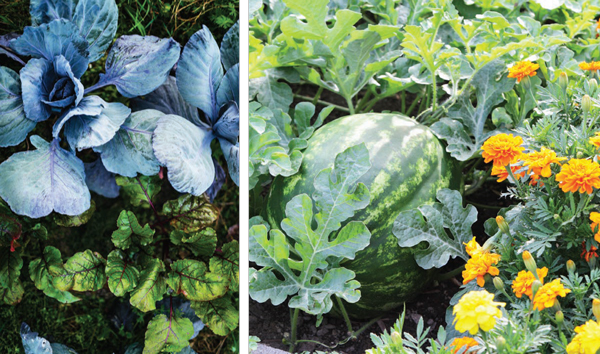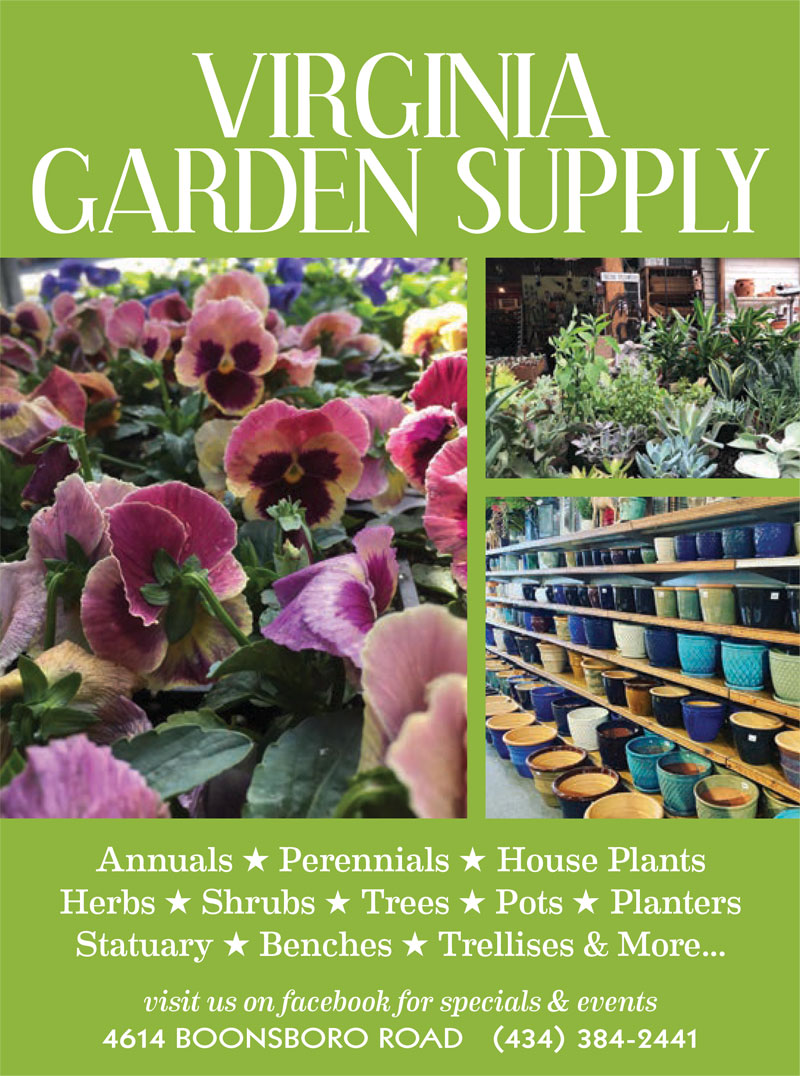Winning Combinations | Companion Planting in the Vegetable Garden
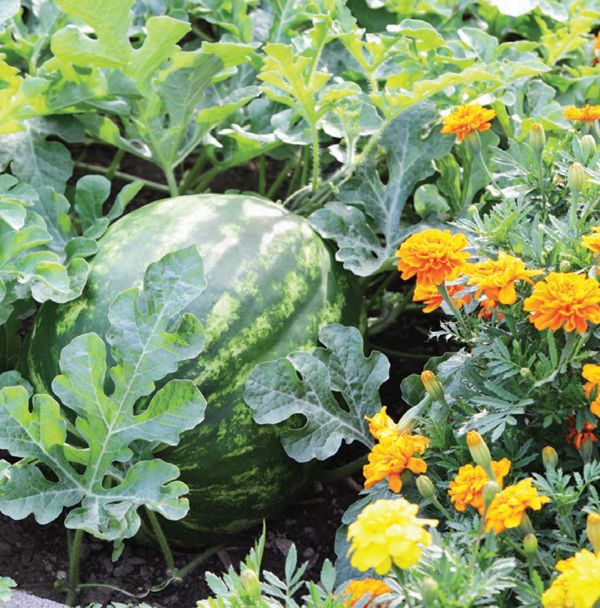
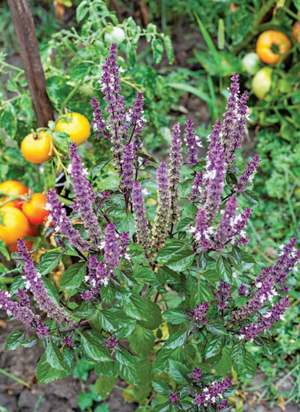 Plants, like humans, do best when they have friends. And just like humans, particular plants get along with some plants better than others. When planted near each other, simpatico plants can have an effect on how each other flourish. This is the basic concept behind companion planting in the garden: planting friends near friends. Plants, like people, compete for resources and space. Some grow fast and take up a lot of space; other plants need more shade or perhaps support to grow to their full height. Some plants add nutrients to the soil, others deplete it. Still others repel insects with their scent while attracting others that may be more beneficial to the garden.
Plants, like humans, do best when they have friends. And just like humans, particular plants get along with some plants better than others. When planted near each other, simpatico plants can have an effect on how each other flourish. This is the basic concept behind companion planting in the garden: planting friends near friends. Plants, like people, compete for resources and space. Some grow fast and take up a lot of space; other plants need more shade or perhaps support to grow to their full height. Some plants add nutrients to the soil, others deplete it. Still others repel insects with their scent while attracting others that may be more beneficial to the garden.
 Nature has been shown to prefer biodiversity, so while we humans love the look of neatly planted rows, it’s been proven that planting in smaller groupings with herbs and flowers mixed in with your vegetables makes it more difficult for pests to find your vegetables. Additionally, this approach can maximize your available growing space. Planning your garden to accommodate these characteristics is not just smart gardening; some say it may actually make your harvest taste better, although that hasn’t been fully scientifically proven.
Nature has been shown to prefer biodiversity, so while we humans love the look of neatly planted rows, it’s been proven that planting in smaller groupings with herbs and flowers mixed in with your vegetables makes it more difficult for pests to find your vegetables. Additionally, this approach can maximize your available growing space. Planning your garden to accommodate these characteristics is not just smart gardening; some say it may actually make your harvest taste better, although that hasn’t been fully scientifically proven.
 Some of the more popular examples of companion planting include the “Three Sisters,” a Native American tradition of grouping corn, squash and beans together. The corn stalks grow tall, offering support to the climbing beans. The beans add nitrogen to the soil, helping the corn’s nutritional needs. And the squash, sprawling around the bottom of both plants, helps block weeds from sprouting with its large leaves. Another well-known method of companion planting is the practice of planting basil, marigolds and nasturtiums around tomatoes. The colorful blooms of the flowers as well as the fragrant herbs repel many a pest that might otherwise try to make a nice meal of your tomato plant.
Some of the more popular examples of companion planting include the “Three Sisters,” a Native American tradition of grouping corn, squash and beans together. The corn stalks grow tall, offering support to the climbing beans. The beans add nitrogen to the soil, helping the corn’s nutritional needs. And the squash, sprawling around the bottom of both plants, helps block weeds from sprouting with its large leaves. Another well-known method of companion planting is the practice of planting basil, marigolds and nasturtiums around tomatoes. The colorful blooms of the flowers as well as the fragrant herbs repel many a pest that might otherwise try to make a nice meal of your tomato plant.
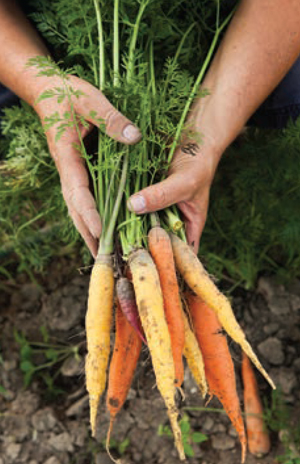 Beyond those popular examples are many other lesser known pairings, like carrots with tomatoes. Carrots are heat sensitive, so planting them in between tomatoes helps provide them with some shade during the heat of the summer. As root vegetables, carrots help aerate the soil around tomatoes, allowing more air and water to reach the roots of tomatoes while the tomatoes produce a natural insecticide, solanine, that targets carrotloving pests. Radishes scattered among the carrots are a friendly addition as well. They germinate faster than carrots, making an easier task out of weeding; the row will be clearly delineated thanks to the radishes, so you’ll avoid plucking what you think are weeds until carrots are fully up. Radishes are also harvested in a shorter time span than carrots, helping to loosen the soil around the carrots as radishes are harvested. This is also about the time carrots start to take off, enjoying their newfound leg room.
Beyond those popular examples are many other lesser known pairings, like carrots with tomatoes. Carrots are heat sensitive, so planting them in between tomatoes helps provide them with some shade during the heat of the summer. As root vegetables, carrots help aerate the soil around tomatoes, allowing more air and water to reach the roots of tomatoes while the tomatoes produce a natural insecticide, solanine, that targets carrotloving pests. Radishes scattered among the carrots are a friendly addition as well. They germinate faster than carrots, making an easier task out of weeding; the row will be clearly delineated thanks to the radishes, so you’ll avoid plucking what you think are weeds until carrots are fully up. Radishes are also harvested in a shorter time span than carrots, helping to loosen the soil around the carrots as radishes are harvested. This is also about the time carrots start to take off, enjoying their newfound leg room.
NATURE HAS BEEN SHOWN TO PREFER BIODIVERSITY, SO WHILE WE HUMANS LOVE THE LOOK OF NEATLY PLANTED ROWS, IT’S BEEN PROVEN THAT PLANTING IN SMALLER GROUPINGS WITH HERBS AND FLOWERS MIXED IN WITH YOUR VEGETABLES MAKES IT MORE DIFFICULT FOR PESTS TO FIND YOUR VEGETABLES.
 Planting vegetables with shorter-to-harvest life among those with a longer time to harvest is a good practice in a few areas of the garden. Consider planting lettuces and radishes with your melons or winter squash, for as your squash plants start getting leggy and need room to sprawl out, the lettuces and radishes will have been harvested, freeing up garden space after keeping it free of weeds.
Planting vegetables with shorter-to-harvest life among those with a longer time to harvest is a good practice in a few areas of the garden. Consider planting lettuces and radishes with your melons or winter squash, for as your squash plants start getting leggy and need room to sprawl out, the lettuces and radishes will have been harvested, freeing up garden space after keeping it free of weeds.
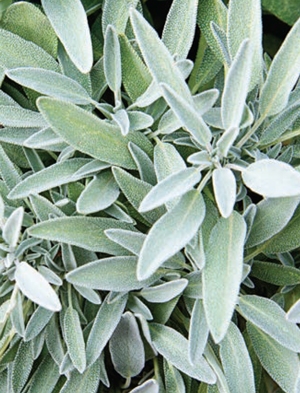 By the same token, some plants need to be kept separate from others. Aromatic herbs, such as sage, stunt the growth of cucumbers. Peppers don’t care to be planted near beans; they get overshadowed by the vines. Basil, onions, spinach and tomatoes are a better neighbor to your pepper plants. Beans, meanwhile, get along swimmingly with members of the Brassicaceae family, better known as cabbage and other cruciferous vegetables like broccoli, Brussels sprouts and cauliflower. And while beans are a great companion to the tall corn plants, that fondness does not translate to other tall plants like sunflowers. Sage, which might not be preferred by your cucumbers, is a great addition to your cabbage patch as a deterrent to the cabbage moth. And even though cabbage and cauliflower are related, they need their space in the garden, as they don’t grow well near each other.
By the same token, some plants need to be kept separate from others. Aromatic herbs, such as sage, stunt the growth of cucumbers. Peppers don’t care to be planted near beans; they get overshadowed by the vines. Basil, onions, spinach and tomatoes are a better neighbor to your pepper plants. Beans, meanwhile, get along swimmingly with members of the Brassicaceae family, better known as cabbage and other cruciferous vegetables like broccoli, Brussels sprouts and cauliflower. And while beans are a great companion to the tall corn plants, that fondness does not translate to other tall plants like sunflowers. Sage, which might not be preferred by your cucumbers, is a great addition to your cabbage patch as a deterrent to the cabbage moth. And even though cabbage and cauliflower are related, they need their space in the garden, as they don’t grow well near each other.
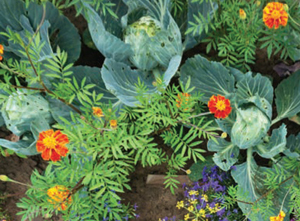 Thankfully, the humble marigold is a friend to almost every plant in the garden, repelling nematodes that attack the roots of many plants as well aphids and beetles. Nasturtiums are also equally helpful in deterring aphids, in addition to being edible and a lovely addition to salads. Both marigolds and nasturtiums attract pollinators, helping to increase the fruit set of tomatoes, cucumbers, squash, peas and more vegetable plants. Both should be planted liberally throughout the garden.
Thankfully, the humble marigold is a friend to almost every plant in the garden, repelling nematodes that attack the roots of many plants as well aphids and beetles. Nasturtiums are also equally helpful in deterring aphids, in addition to being edible and a lovely addition to salads. Both marigolds and nasturtiums attract pollinators, helping to increase the fruit set of tomatoes, cucumbers, squash, peas and more vegetable plants. Both should be planted liberally throughout the garden.
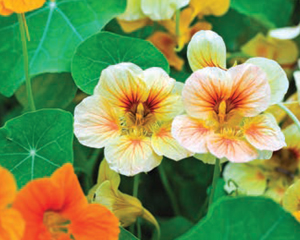 For resources on the best planting combinations for your garden, start by asking your local nursery for suggestions. If you need more homestead supplies, you can visit sites like Homesteading Warehouse and contact them for assistance. For more a more in-depth look, there’s plentiful information online and in books dedicated to the subject, although sometimes, the best knowledge comes from the experience of keeping a garden year in and year out. Keep a record of what does well and see if you can find your best companion planting combinations. ✦
For resources on the best planting combinations for your garden, start by asking your local nursery for suggestions. If you need more homestead supplies, you can visit sites like Homesteading Warehouse and contact them for assistance. For more a more in-depth look, there’s plentiful information online and in books dedicated to the subject, although sometimes, the best knowledge comes from the experience of keeping a garden year in and year out. Keep a record of what does well and see if you can find your best companion planting combinations. ✦
basil, beans, biodiversity, broccoli, Brussels sprouts, carrots and tomatoes, cauliflower, Companion Planting, corn, Cucumbers, garden, marigold, Nasturtiums, onions, peas, sage, squash, sunflowers, Vegetable Garden, vegetables
